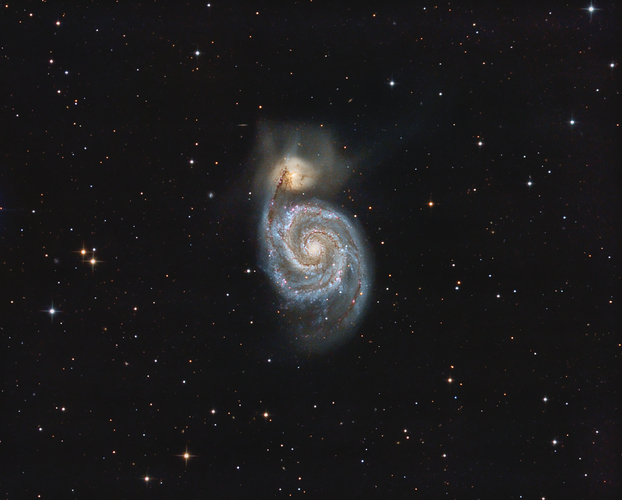Here’s my latest image of the Whirlpool Galaxy. This is a first light image using my new ONTC1010 10" f/4 reflector that I got from Teleskop Service in Germany. I used a Paracorr with it, bringing the f-ratio to f/4.6. I compared this result to the image I took a few years ago with my TMB130SS at 728mm. This one is deeper with more detail in about the same amount of time. Pretty pleased with the scope overall, and should be a good fast light bucket for galaxies and planetary nebulae.
Description:
The Whirlpool Galaxy is a spiral galaxy in the constellation Canes Venatici and lies some 23 million light years away. It’s an interacting galaxy pair and was the first to be identified as a spiral galaxy. This interaction has set up waves of star formation through the compression of interstellar hydrogen gas and dust. These dust lanes are prominent features of the Whirlpool. The Whirlpool has been host to several supernovae, the most recent of which was SN2011dh.
Details:
Scope: ONTC1010 f/4 reflector
Coma corrector: Paracorr Type 2
Camera: QSI690-wsg8
Guide Camera: SX Ultrastar
Mount: AP1100
L: 27x5min 1x1 binning
RGB: 12x5min 2x2 binning each
Total exposure: 5.2 hours
Software: Voyager, PHD2, APCC, Pixinsight
https://astrob.in/full/aqw69q
